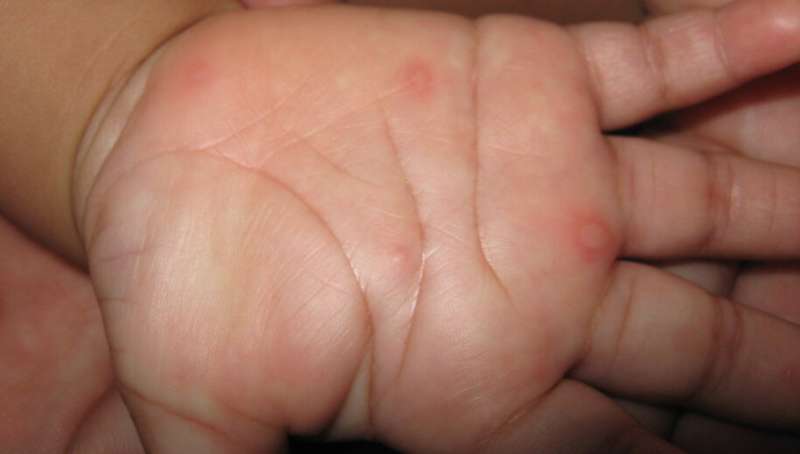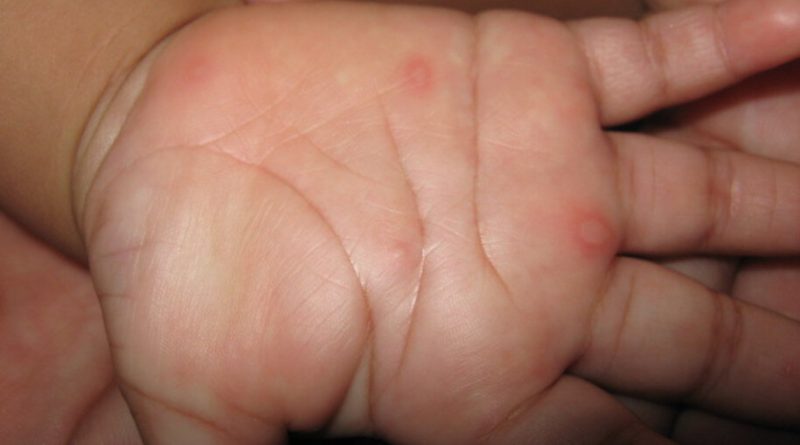Common childhood bug ‘hyped up as tomato flu’

Leading clinicians and medical researchers in India say they are aghast at the media reports that portray hand, foot and mouth disease (HFMD)—a common, relatively mild, viral infection afflicting children—as caused by a new virus responsible for what is dubbed “tomato flu.”
The reports appear to originate from the correspondence section of Lancet Respiratory Medicine published on 17 August that said “just as we are dealing with the probable emergence of fourth wave of COVID-19, a new virus known as tomato flu, or tomato fever, has emerged in India in the state of Kerala in children younger than five years.”
Vinod Scaria, virologist and principal scientist at the Institute of Genomics and Integrative Biology of the Council of Scientific and Industrial Research, New Delhi, says that “calling the virus new and sensationalizing HFMD as ‘tomato flu’ through correspondence in Lancet Respiratory Medicine, without taking into account data in published literature or facts on the ground, is the issue here.”
The strains responsible for the current outbreak were identified as enteroviruses (viruses that are transmitted through the intestine) Coxsackie A16 and A6 by the state’s Institute of Advanced Virology in Thonnakkal. A report in the Journal of Medical Virology on 24 August also confirms the predominant role of the two Coxsackie strains.
But according to the Lancet article, “primary symptoms observed in children with tomato flu are similar to those of chikungunya, which include high fever, rashes and intense pain in joints.” It goes on to say that “tomato flu gained its name on the basis of the eruption of red and painful blisters throughout the body that gradually enlarge to the size of a tomato.”
That description of symptoms has been challenged as “ludicrous” by Aravind Reghukumaar who heads the Department of Infectious Diseases at the state-run Trivandrum Medical College, Kerala.
“HFMD is a clinical diagnosis that cannot be confused with chikungunya or dengue,” Reghukumaar told SciDev.Net. “Furthermore, it is not scientific to name diseases after vegetables.”
“Overall, this article has become a source of media sensation, medical misinformation and unnecessary alarm in India,” said Reghukumaar, one of a group of leading Indian doctors who have written to the Lancet calling for the “retraction of this unscientific article at the earliest”.
As to its relation with COVID-19, he explained that “outbreaks of HFMD were linked to the opening of schools in Kerala at the end of 2021, after remaining closed for almost two years during which all respiratory viral infections in the state were low due to stringent restrictions against COVID-19. Reopening of schools changed the landscape and set the environment for HFMD and other viral infections to spread.”
According to Sandhya Raveendran, a district surveillance officer, Kerala State Health Services in the district of Kollam, where HFMD first surfaced in May and infected more than 80 children within two months, strict vigilance in the state under the Integrated Disease Surveillance Program made it noticeable.
“The symptoms of HFMD are typical and cannot be confused with COVID-19,” Raveendran told SciDev.Net. “We give supportive treatment to affected children, though the disease is well-understood, self-limiting and rarely shows complications.”
Raveendran said care is taken to send random samples to the National Institute of Virology’s field unit at Alapuzha, Kerala. “If many children are affected, the concerned school is closed and the health department called in to disinfect the premises, but there is no cause at all for panic.”
In order to allay confusion over HFMD as tomato flu in the media, the Kerala government issued a press release providing details of likely symptoms and treatment and stating that no serious cases had been reported. It warned, however, that since those infected were mostly children under five, care had to be taken and patients kept isolated.
“HFMD is a disease that people are very familiar with—the only slight difference is that adults are getting it now, though the disease is much milder in adults,” says Suma Balan, pediatrician and professor at the School of Medicine, in Amrita Vishwa Vidyapeetham, Kochi, Kerala.
Balan believes that linking HFMD to the monkey pox added to the confusion and “unnecessarily dragged the HFMD outbreak into the limelight.” The Lancet correspondence says that blisters caused by HFMD “resemble those seen with the monkeypox virus in young individuals.”
Source: Read Full Article



